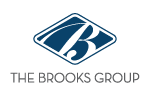ATD Blog
Highly Effective Sales Training: 6 Ways to Get the C-Suite on Board
Here are six “must haves” for building an effective and customized sales training program, and six selling points to get your executives on board.
Tue Mar 18 2025

Whether your sales team size is 10, 100, or 1,000, you may be asking how you can deliver sales training that addresses the skills gaps of every seller. This is just one of two main challenges for L&D professionals: 1) You can’t use a one-size-fits-all approach. 2) You need to get your C-suite on board before you launch.
The most effective sales training and development programs have the support of leadership and are tailored to the unique needs of your organization and individual sellers. Here are six “must haves” for building an effective and customized sales training program, and six selling points to get your executives on board.
6 Essentials of Effective Sales Training Programs
Successful sales training means more than just teaching your sales team the basics of your product or service. These six factors are crucial to the rollout of an effective sales training program.
1. Leadership support: Sales professionals need to know that their leaders are invested in their development and success. Leaders who are actively involved in the sales training process signal to their team that they are committed to their development and want them to succeed.
2. Clear expectations: Leadership support starts with a clear vision for the sales team and setting expectations for each member.
3. Ongoing reinforcement: Success also involves ongoing support and resources such as regular formal and informal check-ins, one-on-one meetings, and performance reviews.
4. Role-specific training: Providing role-specific training in addition to general sales training helps each team member understand their unique position within the team and how they can best contribute to winning business.
5. Relevance: Sales training must be relevant and applicable to each seller’s day-to-day work. Nothing hurts engagement more than courses that are outdated or off-topic. Sales professionals need to see the value in their learning and how it can help them close more deals.
6. Engagement: Effective sales training must motivate, engage, and challenge learners so they stay invested and retain information long after the initial training.
6 Selling Points to Get Leadership on Board
These are multiple benefits of effective sales training, but C-suite executives typically focus on key outcomes that prove the value of programs. Use these six points to help convince your leadership to buy in.
1. Close more sales. Well-trained sales teams are simply more effective. With the right program, sales professionals can better identify and qualify prospects, engage buyers, generate pipeline, and close new business.
2. Improve prospect engagement. Sales training can help your sellers become better communicators by teaching them how to listen attentively, build rapport, ask questions, and give dynamic presentations that advance the sale.
3. Adhere to sales process. By training on your organization’s sales process, you ensure sellers use a consistent approach, stay organized, work efficiently, and be as effective as possible throughout the sales cycle.
4. Overcome objections. Objections are an opportunity to address the buyer’s concerns, change their mindset, and move the sale forward. Sales training can show your team how to identify and manage common objections to close the sale.
5. Maximize sales technology. The sales professional now uses an average of 10 tools to close deals. A well-trained team knows how and when to use platforms to maximize their value.
6. Understand sales analytics. Finally, sales training helps sellers understand how to use data to make decisions, track progress, and identify areas for improvement.
Launching the Best Sales Training Programs
Are you delivering the training your sales organization needs in today’s economic climate? Effective training will help your sellers reach their full potential and help your company stay ahead of the competition.
Download your copy of The Value-Driven Seller: Essential Skills for Consultative Sales to learn how to transform sellers and achieve long-term revenue gains.
More from ATD


